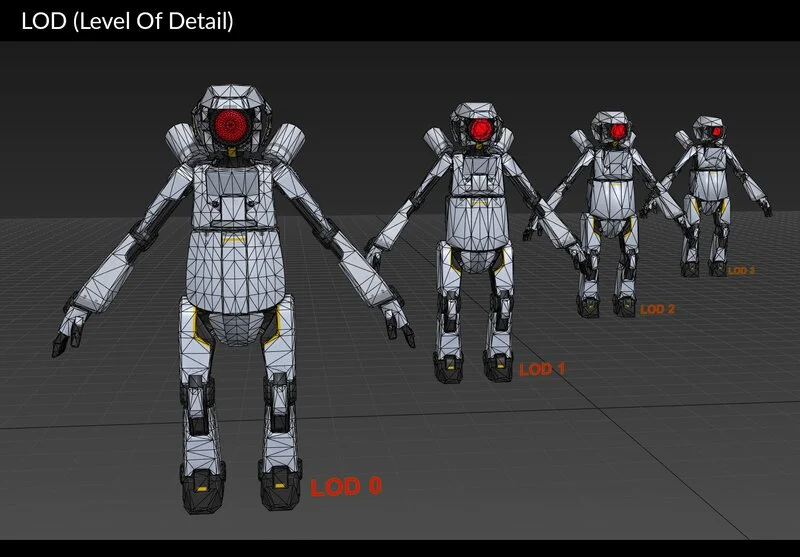By Amirhossein Rahnavard
In this article, we are going to take a brief look at Rockstar’s RAGE engine and its 60 frames per second challenge.
In order to get rid of this devilish word (Frame), it’s better to first understand its meaning. What is a frame?
A frame in the video game and computer graphics industry refers to each still image that is continuously displayed to create the illusion of motion. When we mention “Frame,” we are actually referring to the number of images a system can process and display per second. This metric is measured in frames per second (FPS). A higher frame rate means more images are displayed per second, resulting in smoother visuals. In video games, the frame rate is a crucial factor for the gaming experience. A low frame rate causes movements in the game to appear slow and choppy, whereas a higher frame rate provides a smoother and faster experience.
One of the key applications of frame rate is in improving players’ reactions to in-game events. In competitive or fast-paced games, such as first-person shooters, a higher frame rate is essential because players need to react quickly to changes in the environment and opponents. Ultimately, the higher the frame rate, the lower the input delay, resulting in a smoother gaming experience.

Everything is personal to Rockstar
RAGE: Rockstar’s Fearsome Weapon
Rockstar’s engine, known as RAGE (Rockstar Advanced Game Engine), is one of the best game engines designed for creating large and complex open worlds. Compared to other famous engines like Unreal Engine or Unity, RAGE is specifically optimized for Rockstar’s needs and high-detail open-world games. The primary focus of this engine is on creating massive, interactive, and visually realistic open worlds, both in terms of visuals and gameplay (game companies typically create engines based on their specific needs). One of the standout features of RAGE is its deep interaction with the environment and its advanced physics system. While many other game engines use physics engines like Havok, Rockstar has developed its own internal physics systems to deliver a more realistic experience. This engine enables precise interaction with objects and the environment, such as collisions, destruction, and the natural movement of characters. The physics and character animation systems in RAGE use Euphoria technology, which creates natural movements, especially in complex situations.

Euphoria was first utilized in GTA IV. It was that ace up the sleeve! That exemplary physics system!
Euphoria is an advanced physics-based animation engine developed by NaturalMotion. Instead of using pre-recorded animations, it relies on physics simulation and artificial intelligence to create real-time movements, natural reactions, and dynamics. In other words, Euphoria generates character movements live, responding to the environment and physical interactions on the fly!
Another strength of this engine is its ability to manage vast scales and simultaneous details. Games built with RAGE, such as the GTA series and Red Dead Redemption, are known for their incredibly expansive maps, richly detailed environments, and the high number of NPCs in cities or rural areas. Many other engines may lack the optimization needed to deliver adequate performance at such a large scale (as they might not require this level of scale at all). RAGE effectively handles hardware resource management and the dynamic loading of large, complex environments. Unlike other engines that focus more on cinematic visual beauty, RAGE has achieved a balance between stunning graphics and smooth performance. This engine uses advanced techniques like Dynamic Weather Systems, making the natural and urban environments in Rockstar games appear incredibly realistic. Additionally, the precise lighting and shadowing system in RAGE contributes to creating visually appealing effects under various lighting conditions.

First, I apologize for the low quality of the image, but personally, I couldn’t find a better one to convey the point. LOD (Level of Detail) is a 3D technique. In the image, you see a robot at several different levels, where each of these levels has fewer polygons as it gets farther away (the more polygons we have, the more detailed the object or item appears, as you can see). Rockstar uses this technique to display nearby objects more effectively.
How Optimization Works
Due to the complexity of this process, only a few simple techniques will be discussed. Of course, these techniques may be used by many developers and are not exclusive to Rockstar!
Rockstar is one of the most prominent game development companies, renowned for its meticulous attention to detail and optimization of its games. Optimization in Rockstar games is a complex, multi-stage process aimed at providing the best possible experience across various platforms. Using its powerful engine, RAGE, the company employs specific methods for optimizing graphics, performance, and gameplay execution, allowing them to deliver open-world and detailed games with optimal performance on consoles and PCs.
One of the initial stages of optimization in Rockstar games is dynamic environment loading. Instead of loading the entire game world simultaneously, Rockstar utilizes a technique that only loads areas of the game that are currently in the player’s view or will soon be visible. This approach reduces the processing load and optimizes the use of hardware resources.
Rockstar also employs the Level of Detail (LOD) technique. This method involves using 3D models of varying quality depending on their distance from the player. Models close to the player are rendered with high detail and precision, while objects that are farther away are displayed with lower-detail models. This technique reduces the graphical processing load and increases game speed.
Another technique used is intelligent data compression. Data compression refers to the use of specific algorithms and techniques to reduce file sizes without significantly altering the quality of the information. By utilizing advanced compression algorithms, Rockstar optimizes the size of graphical, audio, and game code files.
Optimizing games for consoles and PCs has significant differences. Consoles like PlayStation or Xbox use specific and uniform hardware across all devices, allowing developers to optimize games for a defined range. Optimization on consoles typically involves maximizing the capabilities of the hardware.
In contrast, PCs feature a wide array of hardware and configurations, so game optimization for PC must offer greater flexibility. Developers need to optimize the game for a broad set of processors, graphics cards, and memory types, providing multiple graphical settings to ensure the game runs well on both high-end and low-end systems. This diversity in PC hardware makes optimization quite complex.

Honestly, I’m tired of the repetitive images of this work, so I decided to create an artistic image.
60 Frames for an Open-World Title?
Running GTA VI at a rate of 60 frames per second on consoles like the PlayStation 5 Pro presents a significant challenge due to the numerous technical complexities involved in open-world games. One of the main reasons for this difficulty is the extremely high graphical detail in GTA VI. This game likely utilizes advanced graphical technologies such as ray tracing, precise lighting, and high-quality shadows, which consume a lot of resources from the graphics processing unit (GPU).
Maintaining a frame rate of 60 FPS in such environments requires a very high processing power to render high-quality images, especially in open-world games where all these elements must be processed simultaneously and at a large scale! The complex simulation of the open world in GTA VI is another factor that increases the processing load. Vast environments with numerous NPCs, traffic, day-night cycles, and dynamic interactions require fast and simultaneous processing. These simulations put a significant strain on the central processing unit (CPU) and GPU, making it especially challenging to maintain smooth performance at high frame rates.
To achieve 60 frames per second, all these elements must be executed with coordination and precision, and any discrepancies or slowdowns in these simulations could lead to frame drops or a diminished gaming experience.
Rockstar’s insistence on a dynamic world and the extraterrestrial expectations of fans will make things very challenging.
Advanced physics and artificial intelligence systems in GTA VI also require significant processing resources. Non-playable characters (NPCs) and vehicles in the game are constantly influenced by realistic physical laws and advanced AI. These systems are designed to ensure that NPC and vehicle behaviors react naturally and logically to the environment. Simulating such a level of interactions and complex AI in real time demands continuous and precise processing, which puts additional strain on the system to achieve a frame rate of 60 frames per second.

Jumping to conclusions is pointless
Nothing is Impossible
GTA VI can run on the PlayStation 5 Pro at a rate of 60 frames per second, but achieving this is a significant challenge for Rockstar due to the technical complexities and the open-world nature of the game. The PlayStation 5 Pro features powerful hardware with advanced processors and a high-performance GPU. However, maintaining a frame rate of 60 FPS in games like GTA VI, which include vast worlds and advanced graphical details, requires precise optimization from Rockstar.
To achieve this goal, Rockstar must employ various techniques such as intelligent data compression, optimization of physical systems, and efficient memory usage. Graphical technologies like ray tracing and advanced lighting put considerable strain on the GPU, but Rockstar can maintain game performance at 60 frames by dynamically adjusting quality and carefully managing the graphical load!
One of the most critical factors that can impact the game’s performance at 60 frames is the management of AI and NPC interactions. These systems require heavy processing, which can lead to frame drops. By leveraging its experiences from previous games and employing advanced concurrent processing methods, Rockstar can significantly mitigate this challenge.



Comments